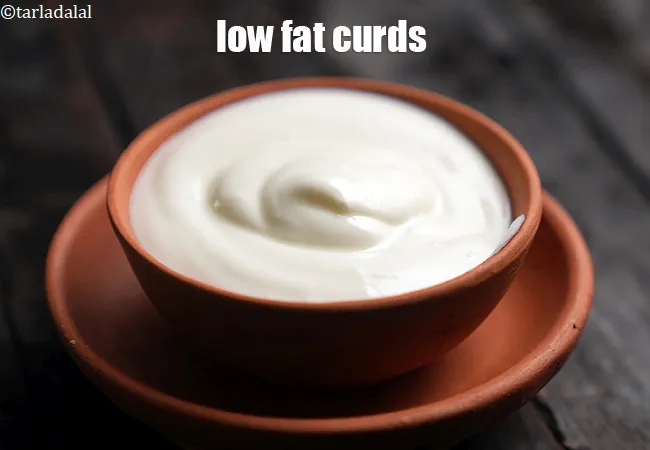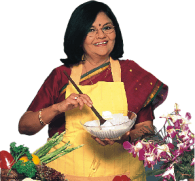Calories in Gula Ruti Recipe (Bengali Style Wheat Flour Pancake)
This calorie page has been viewed 3606 times
How many calories does one serving of Gula Ruti have?
One (50 grams) of Gula Ruti gives 77 calories. Out of which carbohydrates comprise 53 calories, proteins account for 9 calories and remaining calories come from fat which is 18 calories. One serving of Gula Ruti provides about 3.8 percent of the total daily calorie requirement of a standard adult diet of 2,000 calories.
Gula Ruti recipe makes 8 rotis of 50 grams each.
77 calories for 1 gula ruti of Gula Ruti, Cholesterol 0 mg, Carbohydrates 13.2g, Protein 2.2g, Fat 2g. Find how much fibre, iron, calcium, zinc, magnesium, phosphorus, sodium, potassium, folic acid is present in Gula Ruti.
See gula ruti recipe | Bengali style wheat flour pancake | instant gola roti |
Gula ruti is a healthy dish prepared using whole wheat flour within few minutes. Learn how to make gula ruti recipe | Bengali style wheat flour pancake | instant gola roti |
Gula ruti is a popular Indian flatbread that is made using whole wheat flour, fresh colourful vegetables, and spices. It is a healthy and delicious alternative to other types of flatbread, such as naan or roti.
This instant gola roti is given a Bengali twist by adding panch phoron to it. Gula ruti has a soft texture than other types of flatbread. It has a mild, nutty flavor and a slightly crunch from the vegetables.
Bengali style wheat flour pancake is a popular side dish for curries, dals, etc. It can also be eaten on its own as a breakfast or snack.
pro tips to make gula ruti: 1. For a crispier gula ruti, cook it for a little bit longer on each side. 2. It is best served hot with green chutney. 3. Do not grease the tava every time you make gula ruti otherwise you won’t be able to spread it properly.
Is Gula Ruti healthy?
Yes, this is healthy.
Let's understand the Ingredients.
What's good.
Whole Wheat flour (gehun ka atta) : Whole wheat flour is excellent for diabetics as they will not shoot up your blood sugar levels as they are a low GI food. Whole wheat flour is rich in Phosphorus which is a major mineral which works closely with calcium to build our bones. Vitamin B9 helps your body to produce and maintain new cells, especially increase red blood cells. See detailed 11 benefits of whole wheat flour and why it's good for you.
Tomatoes ( Cherry tomatoes, Yellow tomatoes ) : Tomatoes are extremely rich source of Lycopene. Tomatoes are a powerful antioxidant, super rich in Vitamin C, good for heart. Tomatoes are a Pregnant woman's friend and are rich in Folate or Folic Acid which helps your body to produce and maintain new cells, especially red blood cells. Read about 13 amazing benefits of tomatoes.
Coriander (kothmir, dhania) : Coriander is a fresh herb often used as a flavour enhancer in Indian cooking. It is mainly used as a garnish. This is the best way to use it - no cooking. This preserves its vitamin C content which helps to build our immunity and bring that sparkle to the skin. The antioxidants vitamin A, vitamin C and the quercetin present in coriander works towards strengthening our immune system. Coriander is a fairly good source of iron and folate – the 2 nutrients which help in the production and maintenance of red blood cells in our blood. Good for reducing cholesterol and good for diabetics. Read 9 benefits of coriander to understand details.
Onions (pyaz, kanda) : Raw onions are a very valuable source of vitamin C – the immune building vitamin. Along with other phytonutrients from onions, it helps to build WBC (white blood cells) which serves as a line of defence against illness. Yes, it’s a source of many antioxidants, the most important one amongst them being Quercetin. The quercetin in Onions promotes production of HDL (good cholesterol) and lowers total cholesterol in the body. The sulphur in onions act as a blood thinner and prevents blood clotting too. This in turn would lower blood pressure and good for heart, diabetics. Read the benefits of onions.
Coconut Oil : Use coconut oil instead of processed seed oils like soyabean oil, canola, sunflower oil, corn oil and other omega-6 rich oils should be used in very low amounts. Coconut oil is a medium chain triglycerides (MCT’s). Unlike other fats, they go directly from the gut to the liver. From here, they are then used as a source of energy. As the calories in MCT’s are used straight away, they are less likely to be stored as fats in the body. MCT's have shown to improve your brain and memory function, they also give a boost to your energy levels and improve your endurance. The MCT in Coconut oil reduces the LDL cholesterol (bad cholesterol) while increasing the count of HDL cholesterol, maintaining normal blood pressure and good for diabetics. See detailed benefits of coconut oil.
Can diabetics, heart patients and over weight individuals have Gula Ruti ?
Yes. Whole wheat flour is excellent for diabetics as they will not shoot up your blood sugar levels as they are a low GI food. Whole wheat flour is rich in Phosphorus which is a major mineral which works closely with calcium to build our bones. Vitamin B9 helps your body to produce and maintain new cells, especially increase red blood cells.
Can healthy individuals have Gula Ruti ?
Yes. Consider using coconut oil or olive oil or ghee instead of processed seed oils for a healthier diet.
What is a healthy accompaniment to this roti?
We suggest you pair it with homemade curds using cows milk or low fat curds or a low fat cucumber raita.
Low fat curds recipe | healthy low fat curds | low fat dahi | Indian low fat curds |
Gula Ruti is rich in below macronutrients, vitamins and minerals given in descending order (highest to lowest).
Serving size is 2 rotis per person.
- Phosphorus : Phosphorus rich Indian foods works closely with calcium to build bones. Phosphorus rich Indian foods like dairy products ( milk, paneer, curd), nuts, seeds, jowar, bajra, moong, matki, oats, ragi, wheat flour etc. 30% of RDA.
- Vitamin B1 (Thiamine) : Vitamin B1 protects nerves, helps in carbohydrate metabolism, prevents heart diseases and helps produce red blood cells. Indian Foods rich in B1 are Flax seeds (alsi), Sunflower seeds, Sesame seeds, Garden cress seeds (halim), Capsicum, Wheat flour, Chana dal, moong, walnuts, masoor dal, brown rice, jowar, bajra. 20% of RDA.
- Fiber : Dietary fiber reduces the risk of heart disease, prevents the spike in blood sugar levels and hence super for diabetics. Consume more fruits, vegetables, moong, oats, matki, whole grains. 18% of RDA.
| Value gula ruti | % Daily Values | |
| Energy | 77 kcal | 4% |
| Protein | 2.2 g | 4% |
| Carbohydrates | 13.2 g | 5% |
| Fiber | 2.32 g | 8% |
| Fat | 1.98 g | 3% |
| Cholesterol | 0.0 mg | 0% |
| VITAMINS | ||
| Vitamin A | 201.2 mcg | 20% |
| Vitamin B1 (Thiamine) | 0.1 mg | 7% |
| Vitamin B2 (Riboflavin) | 0.0 mg | 2% |
| Vitamin B3 (Niacin) | 0.8 mg | 6% |
| Vitamin C | 4.1 mg | 5% |
| Vitamin E | 0.2 mg | 2% |
| Folic Acid (Vitamin B9) | 9.5 mcg | 3% |
| MINERALS | ||
| Calcium | 18.3 mg | 2% |
| Iron | 1.0 mg | 5% |
| Magnesium | 25.8 mg | 6% |
| Phosphorus | 88.0 mg | 9% |
| Sodium | 6.6 mg | 0% |
| Potassium | 73.4 mg | 2% |
| Zinc | 0.4 mg | 2% |
Percent Daily Values are based on a 2000 calorie diet. Your daily values may be higher or lower depending on your calorie needs.

Click here to view Gula Ruti


-17104.jpg?w=400&format=webp)















